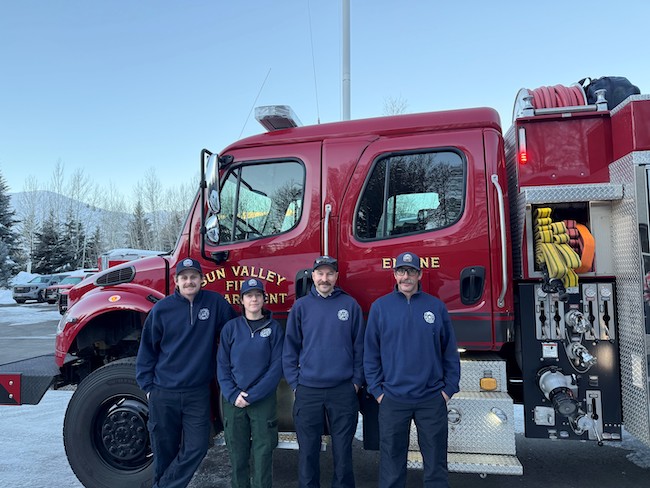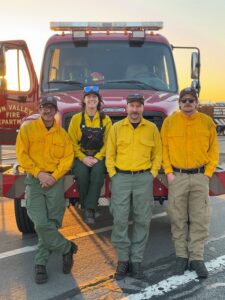
BY ISAIAH FRIZZELL

Taan Robrahn, fire chief of Sun Valley and the North Blaine County Fire District, shared insights into their recent deployment to assist with the massive wildfire disaster in California. This deployment, coordinated through a collaboration of state and national agencies, underscores the unity among firefighting communities across state lines and the community-minded behavior incumbent upon all of us toward each other in what appear to be ever more troubling times. Perhaps we’ll be spared in the mountains?
The Deployment
The scale of the Los Angeles fire and the number of structures affected prompted the California Office of Emergency Management to request additional resources from neighboring states. This request was relayed through the Idaho Office of Emergency Management, which worked closely with the Idaho Fire Chiefs Association to organize task forces of firefighting engines. Sun Valley sent Engine 64, a Type 1 structure engine, as part of Idaho Task Force 4, staffed by a four-person team. The Type 1 is “a firefighting vehicle specifically designed and equipped to handle structural fires in urban or suburban settings. It is the largest and most capable type of fire engine in terms of water capacity, pump performance, and hose length, making it well-suited for complex fire scenarios such as large buildings or multiple structures.” (GPT)
Crewing Engine 64 are Captain Hunter Storey, Lieutenant Julie Youngblood, and firefighters Max Russell and Biche Rudigoz. Their primary responsibilities included conducting structure-to-structure assessments and extinguishing lingering hotspots to prevent further damage.
Challenges and Risks
Chief Robrahn noted the logistical and operational challenges the team faced. One notable hazard was the interference of civilian drones, which posed significant risks to aerial firefighting operations. He highlighted an incident where a drone collided with the wing of a water-dropping plane, resulting in significant damage and emphasizing the importance of public cooperation to keep airspace clear for emergency resources during critical times.
“They have had quite a few incidents of drone incursions. Civilians trying to fly over areas where we’ve got aerial aircraft operating. And that’s one of the biggest hazards for those resources. One of the super-scoopers, the planes that are able to drop water, actually got hit by a drone. It damaged the leading edge of the wing. It’s one of those things that people always want to try to get their own shots and everything. But if the drones are flying, our aerial resources can’t do their job.
Drones have become cheap and make for an easy way to get a quality camera up for a bird’s-eye view but flight lines are mandated and critical. If you have drone skills (and a license in California) approach the team to find a slot and avenue where your drone might be of service which will benefit all and reduce risk of collision. We’re all in this together.
Community and Funding Support
California’s request for assistance included funding arrangements coordinated between state and federal agencies. These efforts ensure that local departments like Sun Valley are reimbursed for their critical contributions. This is interstate community rearing its head. It’s what we’re supposed to be doing for each other in times of crisis. When we have major issues at home, it’s time to open the checkbook for what matters.
Chief Robrahn expressed gratitude for the opportunity to assist, noting the strong connections between the Sun Valley community and the greater Los Angeles area, where many residents have personal ties. “As firefighters, we want to help when and wherever we can,” Robrahn said. “We were lucky to have our team ready and able to deploy immediately.”
Looking Ahead
The team from Engine 64 is expected to remain in California until at least January 27, though this timeline could be extended depending on the incident’s progression. The process of “demobilization,” or breaking down and reallocating resources, will determine their return date.
In closing, Chief Robrahn emphasized the importance of collaboration and the public’s support in mitigating such crises.
“We’re fortunate that we were able to send an engine down and assist with this assignment. Our community has close ties to the greater L.A. area, and you kind of can’t walk around the street without knowing somebody that has been directly affected by these devastating fires. And as firefighters, we want to help when and wherever we can. And yeah, we were lucky to be able to have our team able and willing to immediately deploy.”
The department remains committed to its mission of helping communities in need, wherever they may be.


